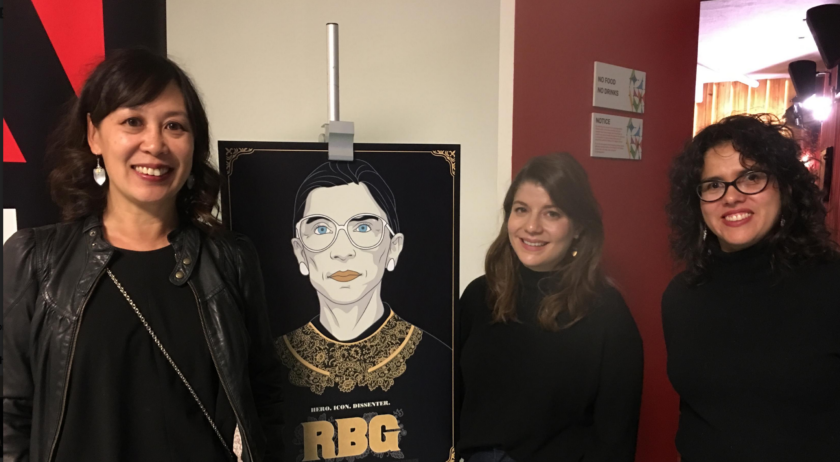M+E Connections

‘RBG’ Filmmakers Tout Benefits of Adobe Premiere Pro CC, 4K
Story Highlights
NEW YORK – Two of the filmmakers behind “RBG” touted the benefits of shooting in 4K Ultra HD and using Adobe Premiere Pro Creative Cloud (CC) to edit the hit documentary film from CNN Films and Magnolia Pictures about U.S. Supreme Court Justice Ruth Bader Ginsburg.
It was the first time that Betsy West, who co-directed “RBG” with Julie Cohen, shot a film using 4K, West told the Media & Entertainment Services Alliance (MESA) Dec. 1 after an Adobe-held screening of the movie that was followed by a panel discussion and audience Q&A.
One of the main advantages of 4K was the ability to still get high-resolution images despite being forced to shoot subjects from a long distance some of the time, West pointed out. In addition to 4K, the film also includes HD footage, old black-and-white home movies and standard-definition archival content.
“Our first shoot was at the Glimmerglass opera festival and they wouldn’t let us get close enough,” West recalled, explaining: “We wanted to put our camera a little closer. We weren’t using 4K – and that was the last time we didn’t use 4K because we were often so far back that we needed the 4K to be able to push in.”
West will “probably” use 4K for future films despite the fact that “it’s more expensive,” she told MESA, adding: “It’s becoming more the standard. And especially if you’re shooting from a distance, to be able to move in and not degrade the quality that’s the main advantage, it seems to me.”
The film played theatrically earlier this year and was recently released on Blu-ray and DVD. It wasn’t immediately clear if there are plans to also release it on UHD Blu-ray.
Discussing the advantages of editing the movie using Adobe Premiere Pro CC, “RBG” editor Carla Gutierrez said during the Q&A that she liked the fact that you can do “very complex things” with it despite “the simplicity of the program.” She also liked the fact that it allowed her to be “very exact and precise with the trimming,” she said.
In an Adobe blog post earlier this year, Cohen said “Adobe Premiere Pro CC is becoming the gold standard in editing,” adding: “Technically, it’s been the smoothest video editing application I’ve ever worked on.”
Gutierrez edited the film with Grace Mendenhall, who said in the blog post it “was really beneficial knowing After Effects and being proficient enough and fast enough with Premiere Pro to have the time to take on an edit, or do some additional graphics work.” Mendenhall relied on Adobe After Effects CC to colorize black-and-white period footage, including stills and moving shots from Harvard University in the 1950s, according to Adobe, which added that, “pulling from her background creating motion graphics in After Effects, Grace leveraged color balance capabilities to match the luminance and create just the right color effect.”
Mendenhall gave a thumbs up to the integration between After Effects and Premiere Pro and said she was “looking forward to trying out the new Shared Projects workflow in Premiere Pro the next time I’m working in a collaborative environment, which will make it even easier to collaborate and edit simultaneously.”
Clara Spera, Justice Ginsburg’s granddaughter, joined West and Gutierrez for the Dec. 1 panel discussion and Q&A.









